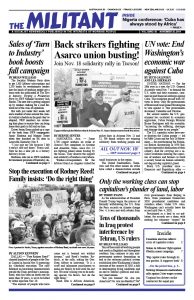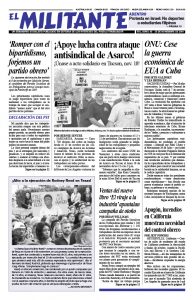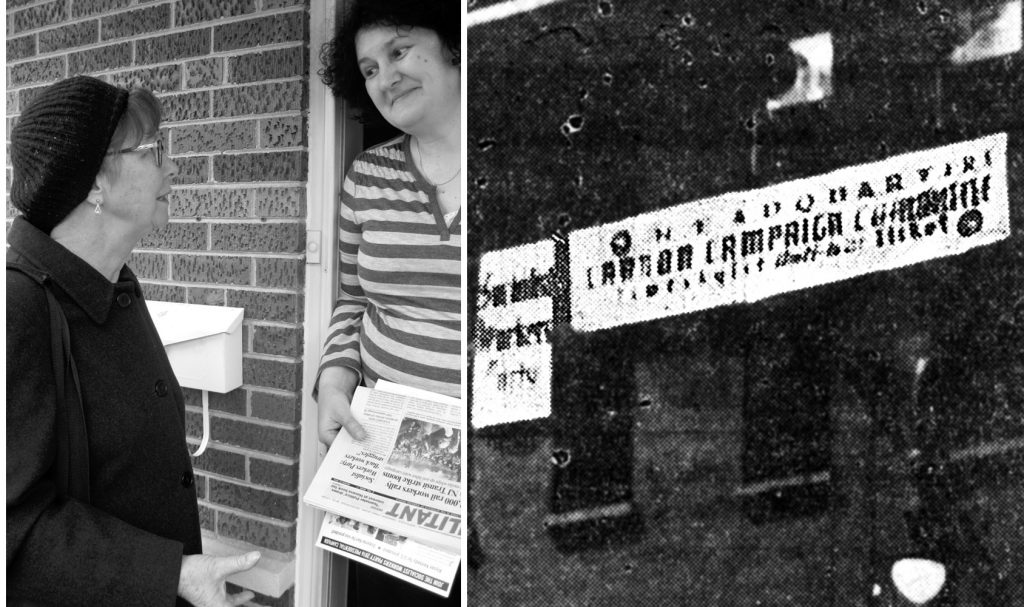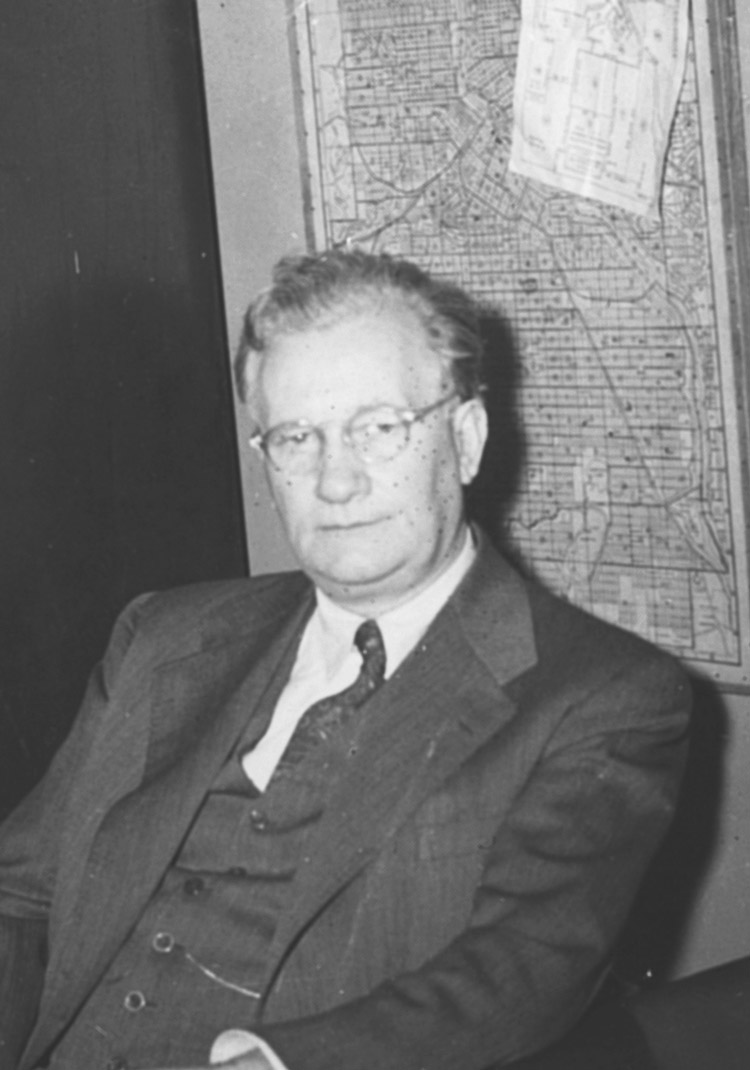![]() Letters from Prison by James P. Cannon, the founding leader of the Socialist Workers Party, is one of Pathfinder’s Books of the Month for November. In 1944, Cannon and 17 other leaders of the SWP and the Minneapolis Teamsters union were imprisoned for opposing Washington’s entry into the second imperialist world war. They were the first to be framed up under the thought-control Smith Act. Cannon’s letters take up questions of program and perspectives key to preparing a communist party for the explosive labor battles that would erupt after the war. The excerpt is from Letter 82, written from the federal prison in Sandstone, Minnesota, on Aug. 9, 1944. Copyright © 1968 by Pathfinder Press. Reprinted by permission.
Letters from Prison by James P. Cannon, the founding leader of the Socialist Workers Party, is one of Pathfinder’s Books of the Month for November. In 1944, Cannon and 17 other leaders of the SWP and the Minneapolis Teamsters union were imprisoned for opposing Washington’s entry into the second imperialist world war. They were the first to be framed up under the thought-control Smith Act. Cannon’s letters take up questions of program and perspectives key to preparing a communist party for the explosive labor battles that would erupt after the war. The excerpt is from Letter 82, written from the federal prison in Sandstone, Minnesota, on Aug. 9, 1944. Copyright © 1968 by Pathfinder Press. Reprinted by permission.
Who is the “J.M.” who writes from Chicago about the two-party system? Just judging by his lack of manners alone I would take him to be an over-educated college boy who “majored” in “iconoclasm.”
There are differences in the Republican and Democratic parties, in my opinion, though not in the sense that J.M. takes as his point of departure — that the Republicans are more “reactionary” than the Democrats. This is an illusion entertained by many workers and fostered by the bulk of the labor bureaucracy, the Social Democrats, and the Stalinists. The Militant does well to center its fire on this illusion; this is the main point, and should be the burden of our agitation. Big capital rules through the mechanism of the two parties as far as fundamental issues are concerned, but not always directly in response to their unanimous commands.
There are deep conflicts of interest as well as differences of opinion in the ranks of the capitalists. The two parties, which are in reality two big factions of a unique two-party system united on fundamentals, and the numerous factions and cross-currents within them, reflect these conflicts and differences. The big capitalists on the whole are more class conscious than the workers, but they are by no means omniscient in judging their own political interests. They don’t always know what is best for them; and as The Militant correctly observes, they are not notably grateful to politicians who have served them best in a given situation.
These Oliver Twists always cry for more with an animal instinct. And they are not a bit squeamist about their methods of getting it. Their ruthless criticism, obstruction and sabotage of the Roosevelt administration — undeterred by the plaintive bleats of the “liberals” and labor fakers that they were hurting the “war effort” — have to be understood as methods of pressure to compel Roosevelt & Co. to do things their way.
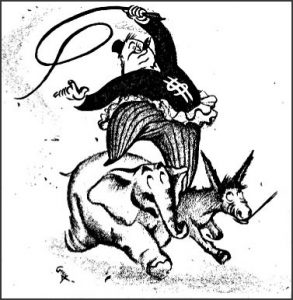
It is not an unreasoning “opposition,” as the labor fakers represent it. Results have shown that their brutal “opposition,” which put Roosevelt in his place as their servant, has been far more effective than the lackey-like support of the labor leaders offered to Roosevelt as the master. Why should he pay for support that he can get for nothing?
The classes are not homogeneous, and neither are the two big class parties. There are differences of origin — this ought to be the starting point in the analysis of every organism — differences of tradition, composition, sectional interests, political machines with their own special interests to serve, different techniques and methods of demagogy to hold various strata of the population in line. These are important factors worthy of notice by the political analyst. But one can lose his bearing entirely if he does not recognize their secondary character.
They complicate the political situation in which the big capitalists have to manipulate the masses in order to assure their firm rule. But in the absence of an independent class opposition on the political field they will continue, as in the past, to solve the problem without too much difficulty.
What is their fundamental method? It is the two-party system. Which party do they support? They support both.
And what is even more important, both parties support them in all fundamental questions. It could not be otherwise under the present political scheme.
The petty bourgeoisie (including the farmers) cannot play an independent role in politics; and the workers — under the Murray-Green policy — have renounced it. In this situation the presidential election becomes a diversion and a safety valve, not a class fight. I would like to see this question treated in an FI [Fourth International magazine] article.
